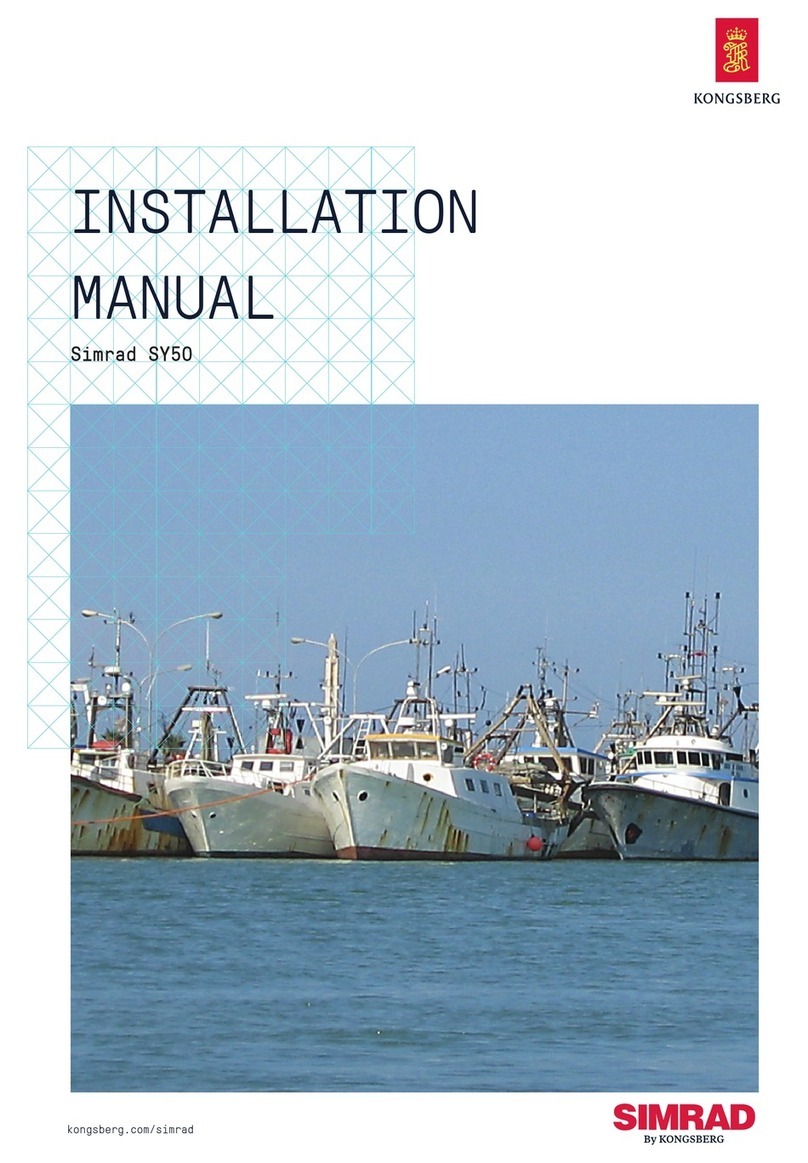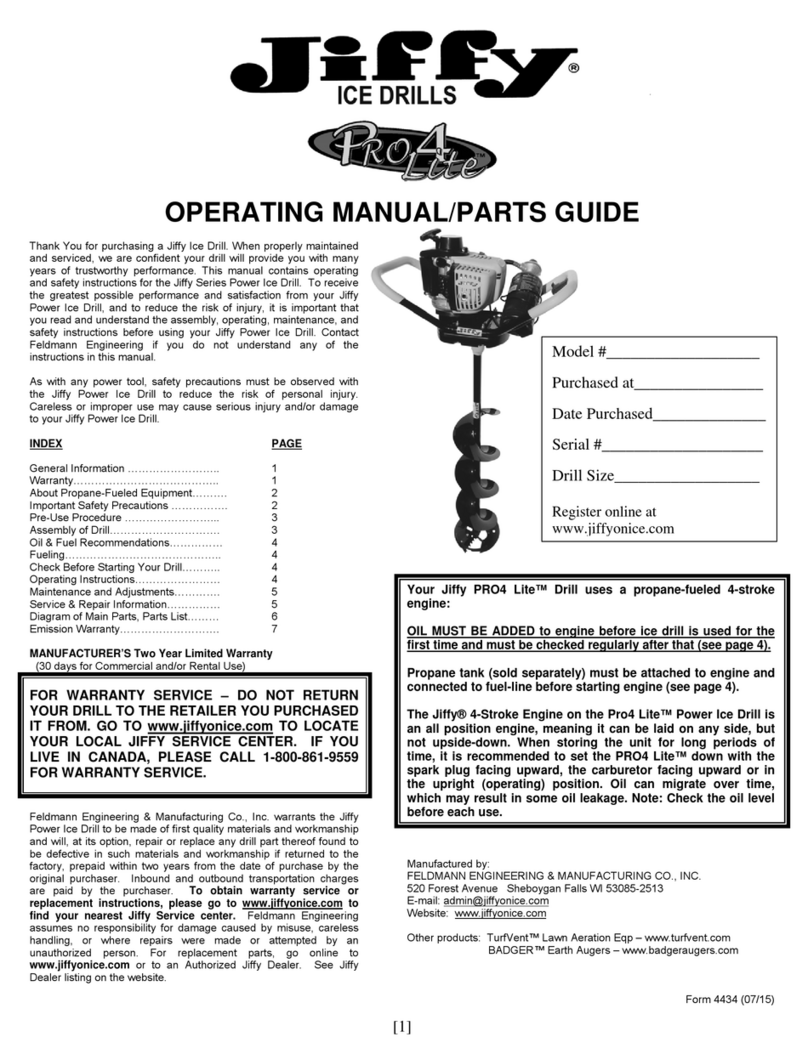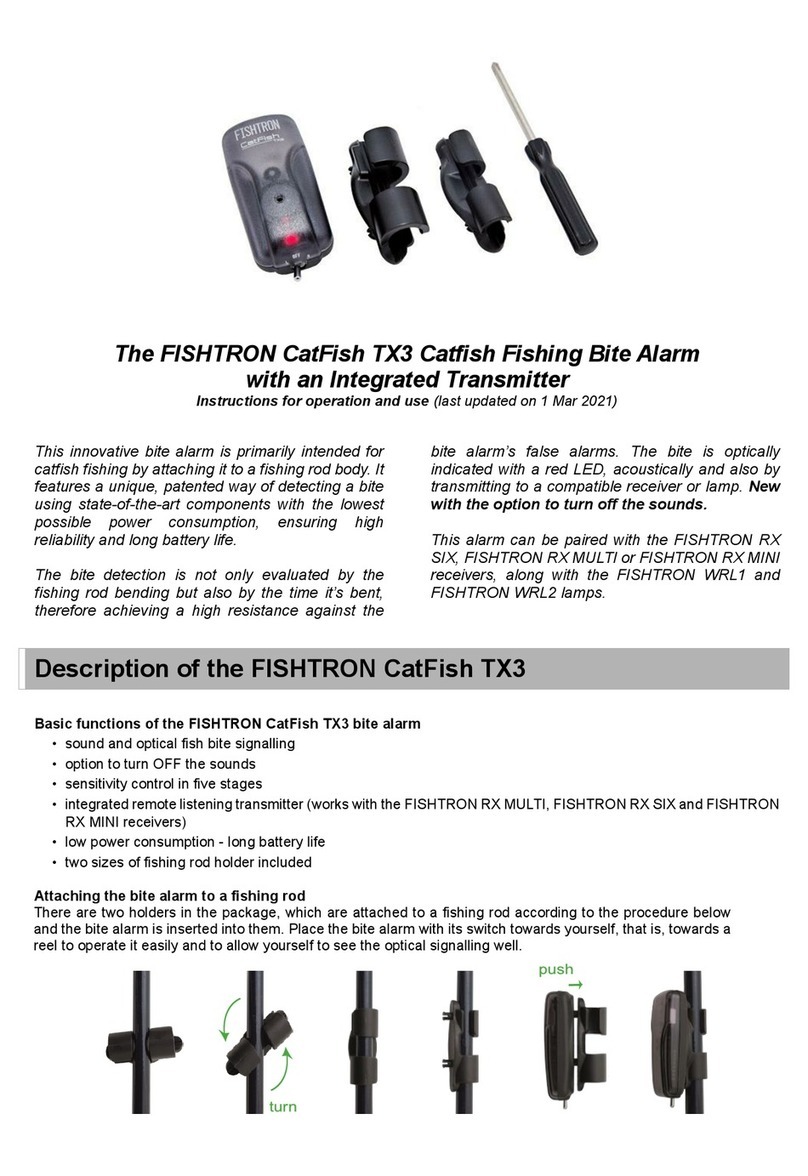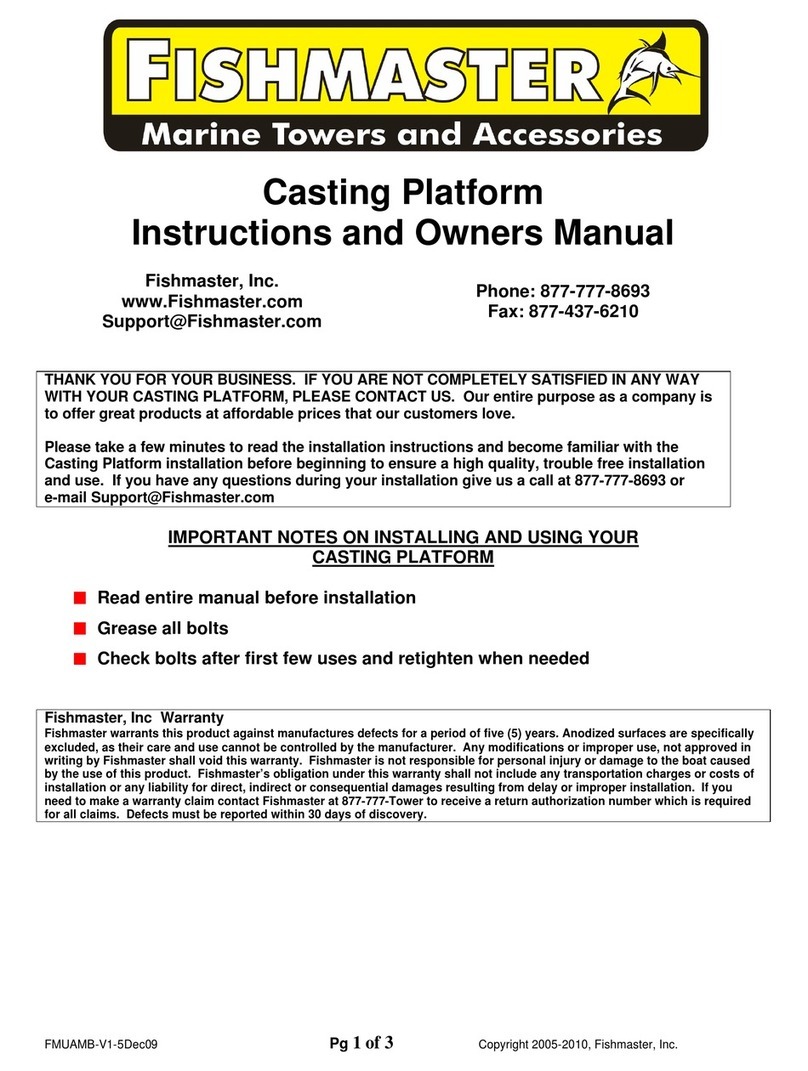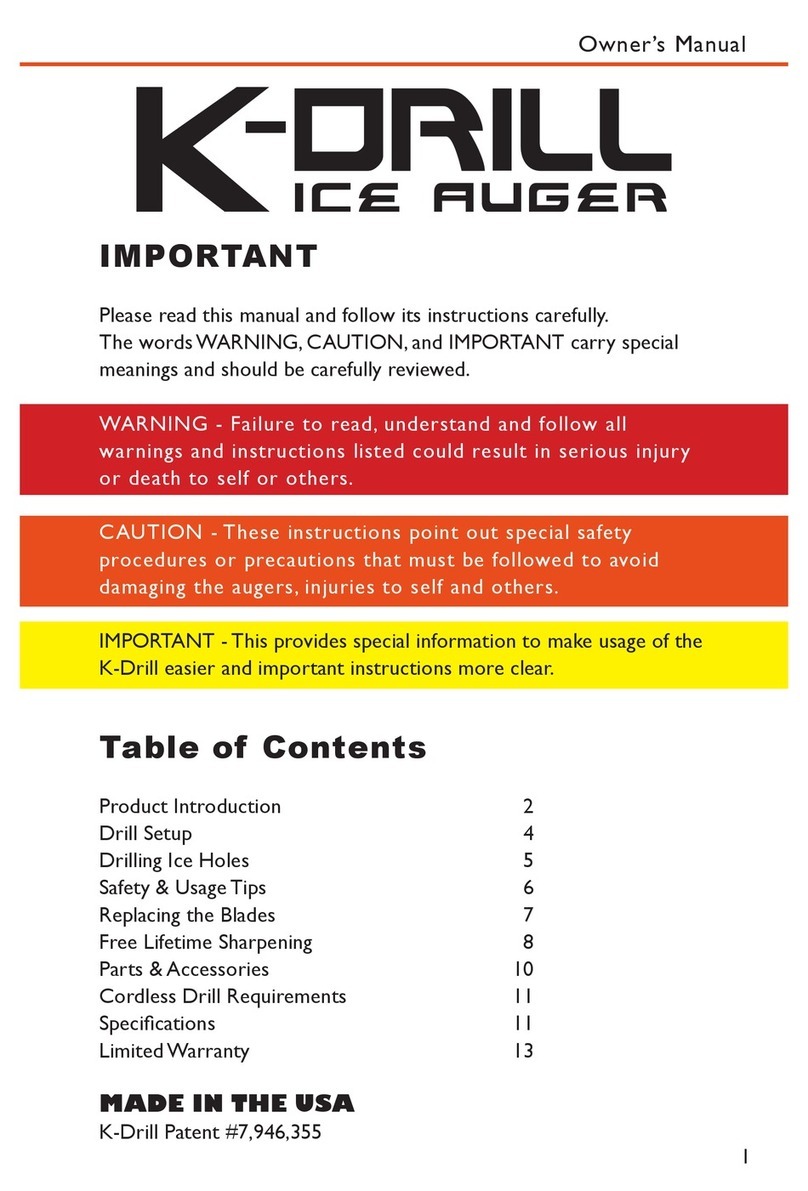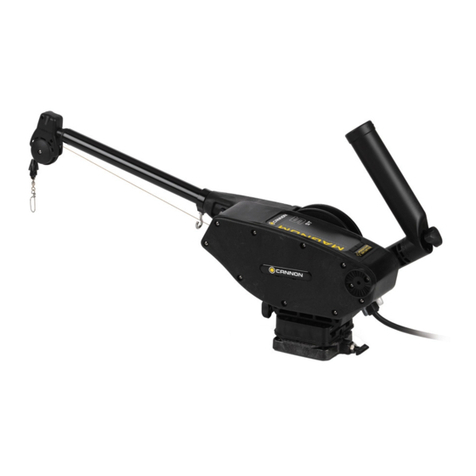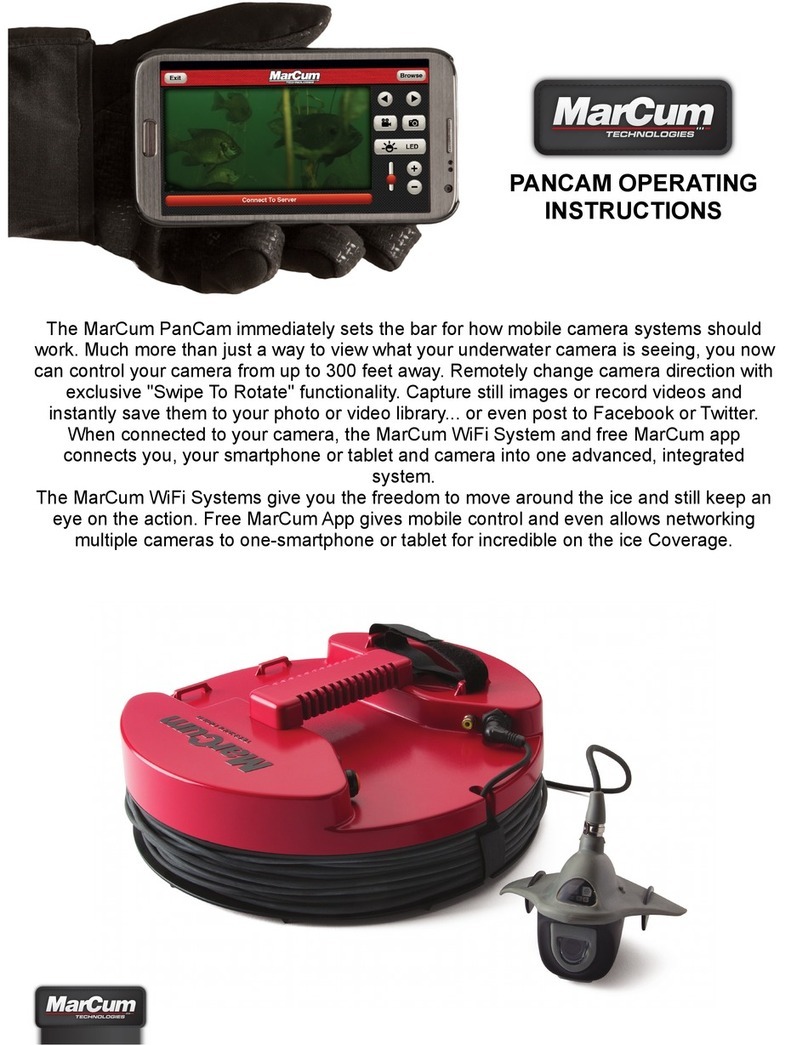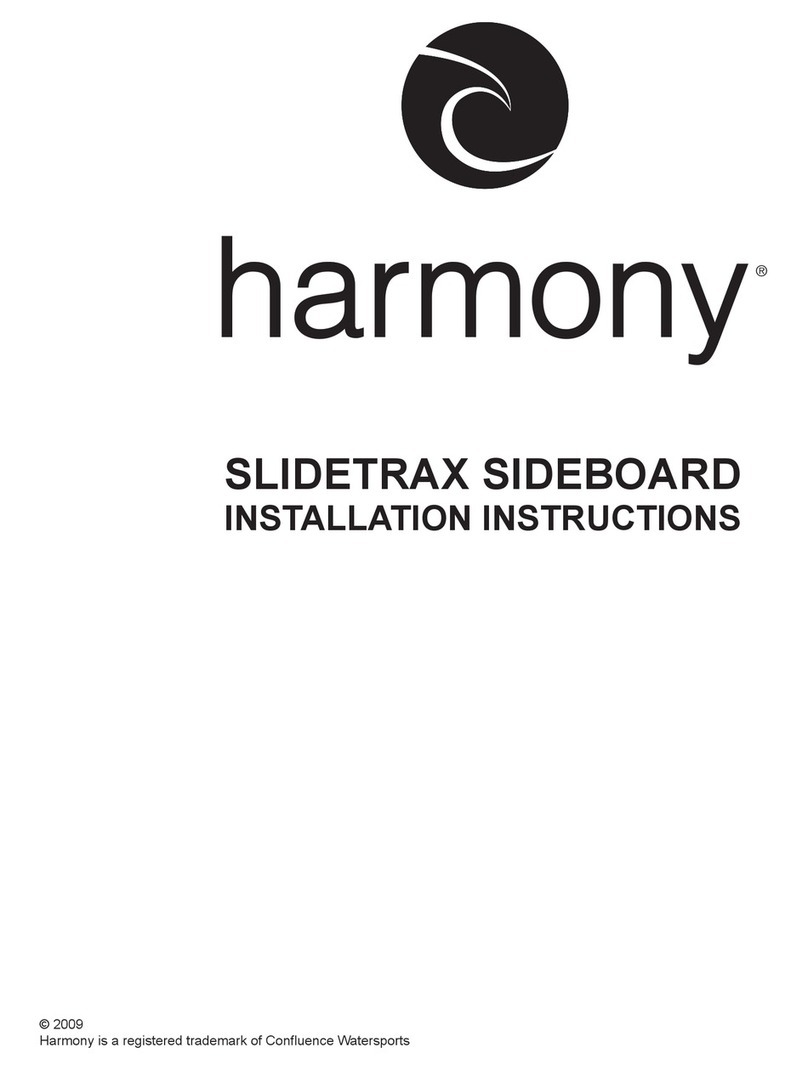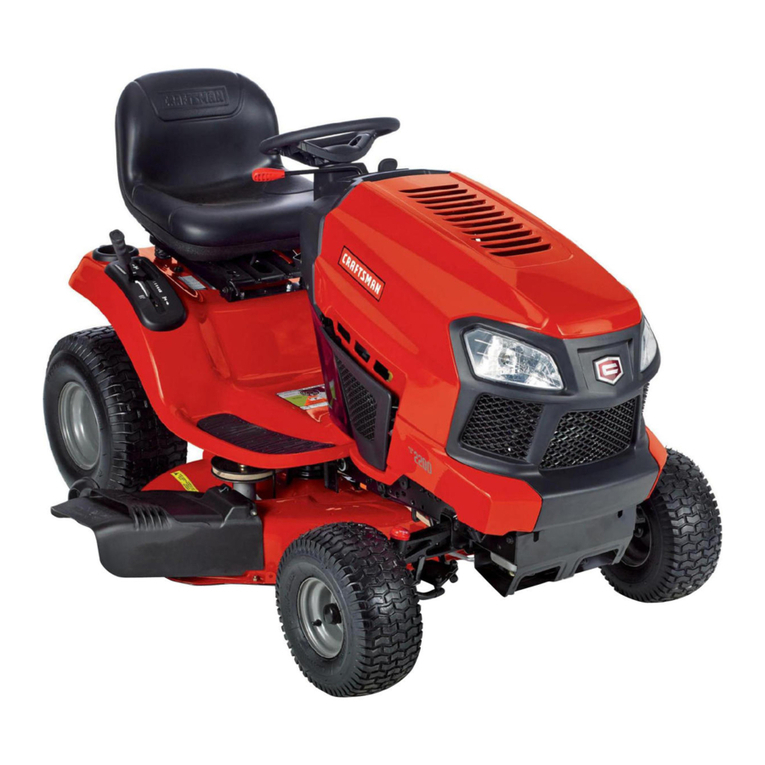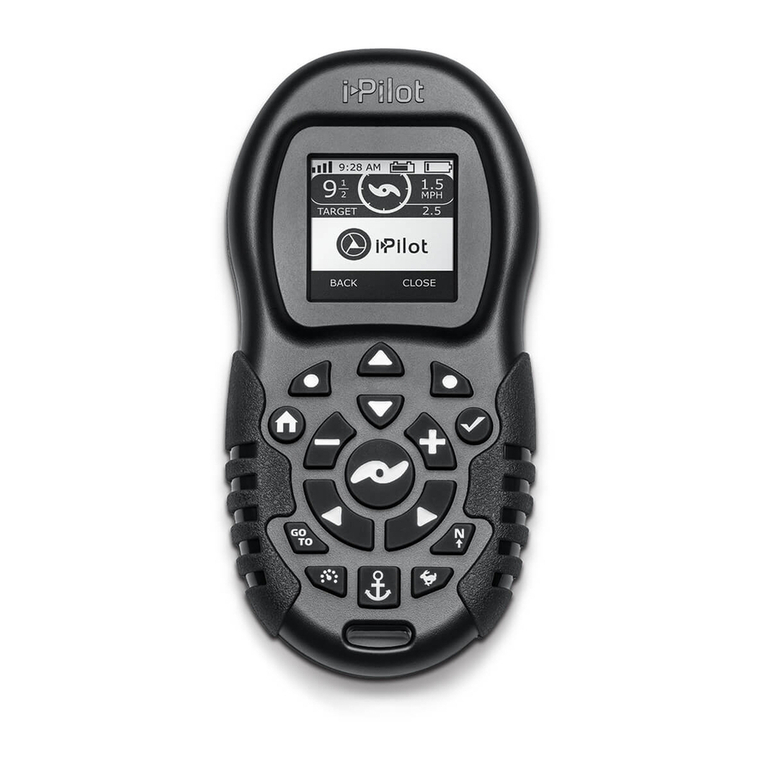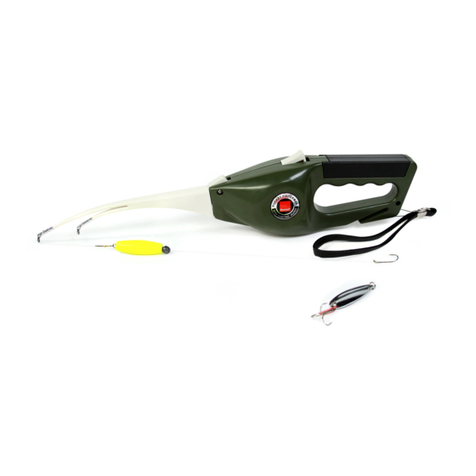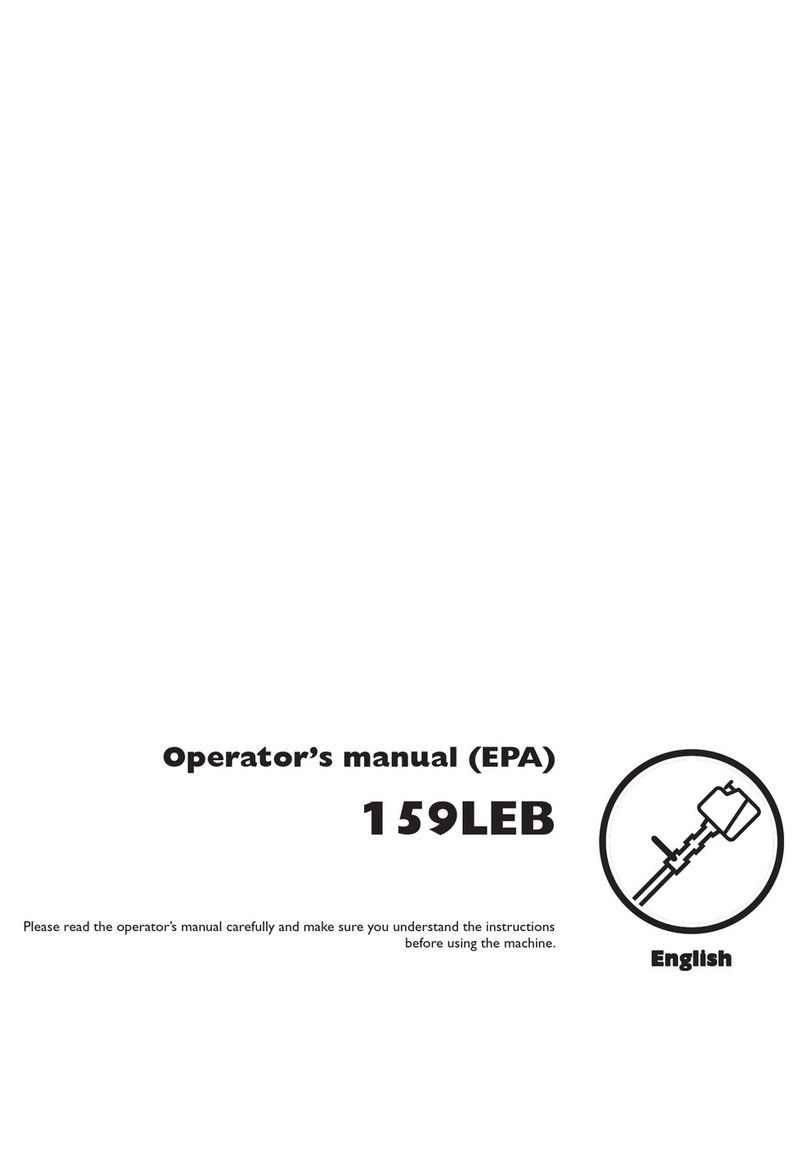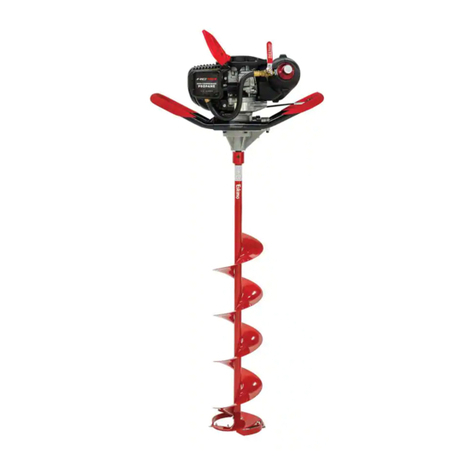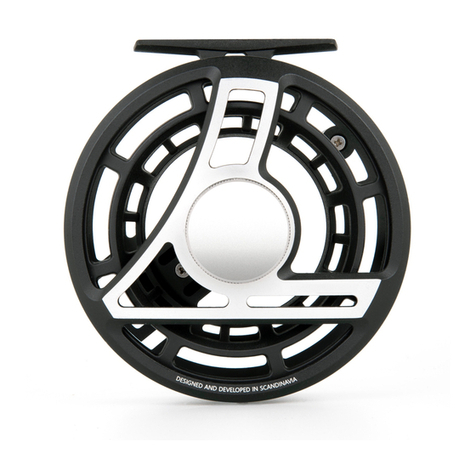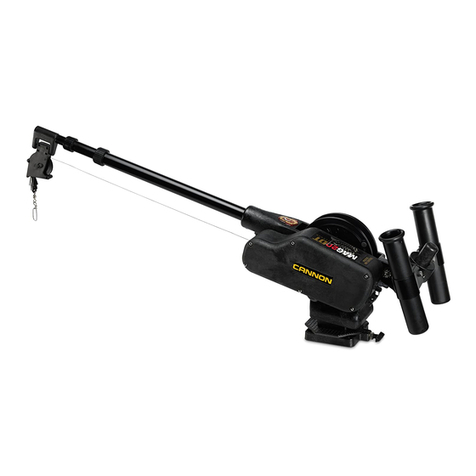
4
IMPORTANT: At no time is it safe to insert the K-drill into the chuck and pow-
er-up the drill to tighten it onto the shaft. The same also holds true of removing
the K-drill from the chuck. Do it manually for your own safety and the safety of
others. If necessary set the drill in Neutral mode or simply remove the battery
when inserting or removing the K-drill from the chuck of the electric drill.
Drilling Holes in the Ice
1) Important to keep protective cover in place until
you are ready to start drilling ice.
2) Ensure drill settings are correct - lowest speed and
drill mode.
3) Ensure K-Drill is secure in the electric drill chuck
4) Set center tip where you want to drill the hole and
that you are holding the drill straight down.
5)Holdthedrillhandleandside-armsupportrm-
ly and pull the trigger fully while using minimum
downward force to begin guiding the drill through
the ice. Occasionally it will help with the support by resting the support
handle on your hip/leg while drilling.
6) On thicker ice, beyond 24 inches, you will drill continuously until the top
ightingisnotvisible,THENCLEARTHEHOLE!
Without letting up on the trigger, resume drilling and clear the hole again of
ice chips every 5 seconds until break-through. Then slow the drill speed until
hole is clear of ice chips or stop drill and reverse
drill direction and drive the chips down under the
ice. DO NOT let up on the drill speed until break-
through as this may result in the k-drill binding and
sticking in the hole.
7) Failure to clear the hole of ice chips and allowing
ittobuildtheseicechipsontopoftheighting
willresultindamagetothetopightingsections.
This will NOT be covered under warranty. It is
the responsibility as operator to adequately “Clear
Your Hole” .
